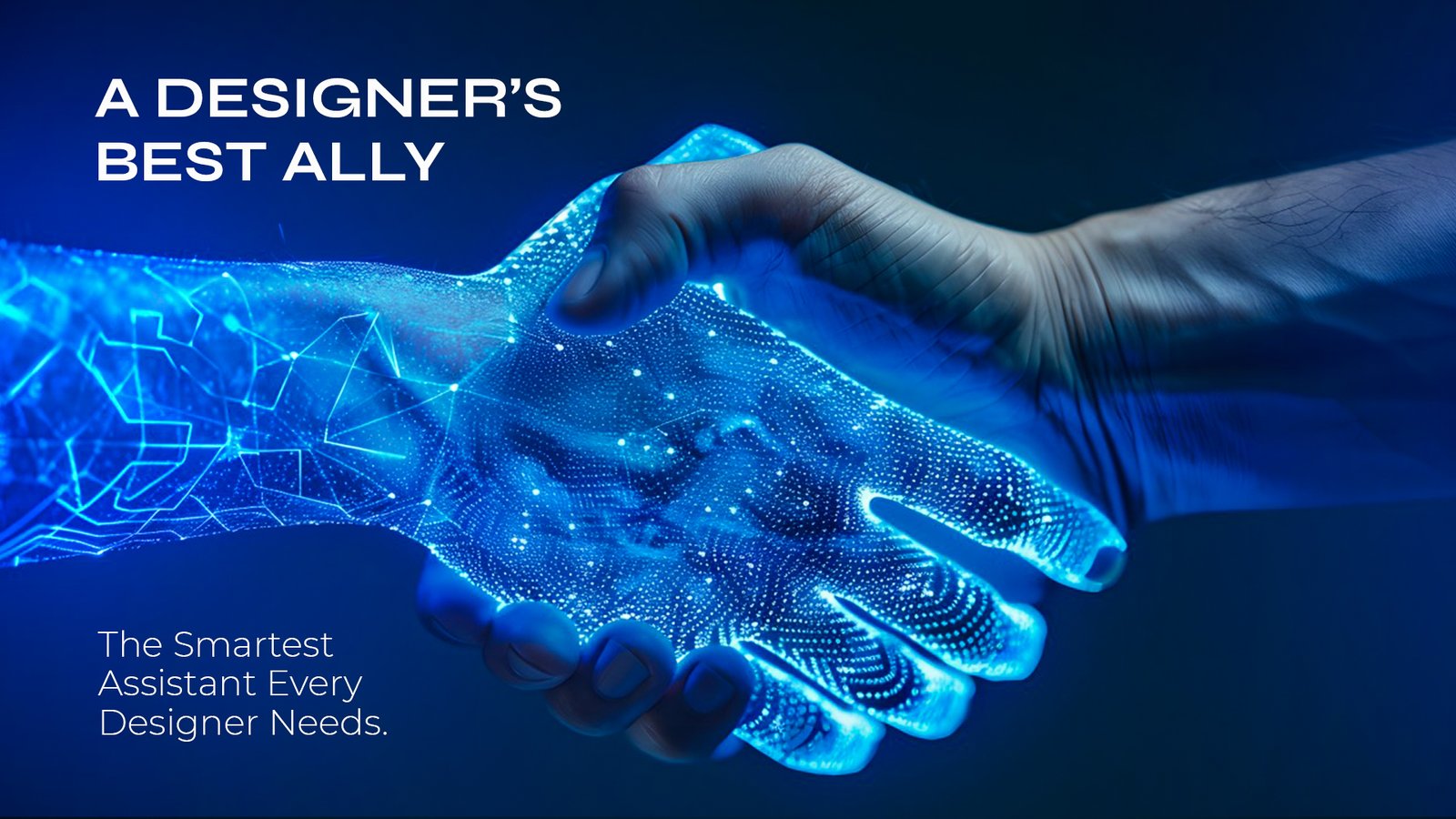The creative industry has seen a rapid transformation due to artificial intelligence (AI). Artificial intelligence (AI) tools are changing our understanding of creativity and design by producing images in a matter of seconds and creating brand logos with only a few prompts. As automation increases, designers are both excited about the potential and afraid of the big question: Will AI replace creators?
It’s a valid worry. Programs like Midjourney, Adobe Firefly, DALLE, and Canva Magic Studio can already produce professional-looking visuals more quickly than ever before. However, we need to take a closer look at what design is and what makes human creativity special to determine whether AI can actually replace designers.
- AI’s Rise in the Design Sector
- AI is no longer a futuristic idea — it’s part of our everyday workflow.
- AI-powered tools are now used by designers to increase efficiency and explore new creative possibilities.
AI is capable of:
- Create layouts, posters, and logos instantly.
- Suggest font combinations and color schemes.
- Resize and optimize content for various social media platforms.
- Automatically enhance images or remove backgrounds.
- Create memorable ad copy and taglines.
For instance, if a designer inputs “modern logo for a coffee brand” into an AI image generator, they will be presented with a variety of logo options in a matter of seconds. Things that used to take hours now take only minutes.
Design is now more accessible to entrepreneurs and non-designers thanks to this technology. Many people in the design industry are worried because small businesses can now produce visuals without hiring a professional. Although AI is capable of creating designs, this does not mean it is capable of true design.
Why Human Designers Are Essential
Design is about using creativity and empathy to solve problems, not just about making things look beautiful. Good design conveys feelings, values, and concepts that people can relate to on a deep level.
But AI is emotionless, insensitive, and unintentional. It is incapable of understanding emotional storytelling, human behavior, or cultural differences.
Let’s look at a few examples:
- Although AI can create a logo, it is unable to fully understand a brand’s story, culture, or vision.
- AI can create brochures, but it cannot predict what will motivate a consumer to take action.
- AI can generate stunning color and font combinations, but it cannot discern what an audience finds authentic.
Human designers contribute far more than just technical ability — they bring intuition, experience, and empathy to their work. They understand that design goes beyond visual appeal; it’s driven by meaning and intention.
Every powerful design carries a story, a purpose, and an emotional connection — elements that AI can mimic but never truly understand or recreate.
The True Future: AI and Designers, Not AI vs Designers

Creative designers are welcoming AI as a collaborator rather than seeing it as a threat. AI can handle time-consuming, repetitive tasks, allowing designers to focus on the stages that require deeper thinking and originality.
Consider AI as your helper:
It speeds up your idea-generation process.
It generates variations and visual mockups quickly.
It manages technical tasks like color correction and resizing.
It helps analyze data to understand what appeals to specific audiences.
In fact, designers can increase their creativity and productivity by using AI wisely.
A designer might generate ten concept options using AI and then refine and personalize the best one using their expertise. This hybrid workflow blends the best of both worlds — machine efficiency and human creativity.
At Branzone Design School, we teach our students to approach AI with curiosity, not fear. Learning to use these tools effectively gives young designers a strong advantage. Those who adapt will lead the next generation of design innovation.
The New Role of Designers in the AI Era
The role of designers is evolving as routine tasks become automated. Instead of being mere executors, future designers will act as creative directors and problem solvers.
Their focus will shift from “how to design” to “why we design.”
They will:
Define brand strategies and visual identities.
Create experiences that emotionally engage audiences.
Tell authentic stories that connect on a deeper level.
Curate and refine AI-generated ideas into meaningful, polished outcomes.
Why Designers Should Embrace AI Now
Ignoring AI will not stop its growth. The smartest choice for today’s designers is to embrace and master it.
Here’s how to stay ahead:
Learn AI tools: Experiment with Midjourney, Firefly, and Runway ML.
Blend creativity with technology: Use AI for ideas, but rely on your artistic instincts for direction.
Focus on human-centered design: Prioritize empathy, storytelling, and usability.
Keep learning: The design industry evolves rapidly, so continuous upskilling is crucial.
At Branzone, we train students to become AI-empowered designers — professionals who can adapt to any future trend while keeping creativity at the core.
No — but designers who ignore AI might be left behind.
AI will continue to evolve and reshape how we create. It will simplify many technical aspects of design, but it will never replace the heart, empathy, and originality human designers bring.
The future of design is not about machines replacing people — it’s about people using machines to expand creative possibilities.
Those who balance technology with imagination will shape the future of the creative world.
At Branzone Design School, we believe in nurturing designers who think, feel, and innovate — because in the end:
AI can assist, but only humans can truly design.








